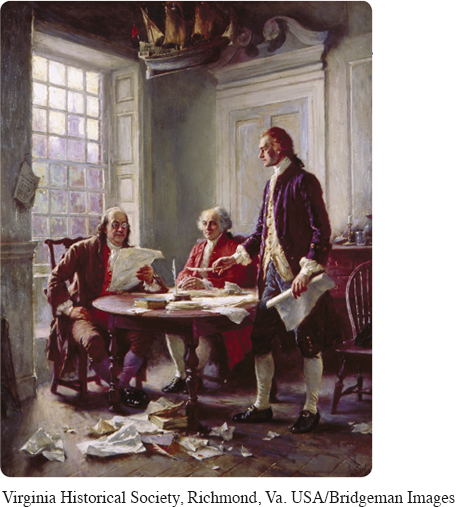Developing Definitions
Definitions explain terms that are unfamiliar to an audience. To make your definitions as clear as possible, avoid making them too narrow, too broad, or circular.
A definition that is too narrow leaves out information that is necessary for understanding a particular word or term. For example, if you define an apple as “a red fruit,” your definition is too narrow since some apples are not red. To be accurate (and useful), your definition needs to be more inclusive and acknowledge the fact that apples can be red, green, or yellow: an apple is the round edible fruit of a tree of the rose family, which typically has thin red, yellow, or green skin.
A definition that is too broad includes things that should not be part of the definition. If, for example, you define chair as “something that people sit on,” your definition includes things that are not chairs—
Page 420
A circular definition includes the word being defined as part of the definition. For example, if you define patriotism as “the quality of being patriotic,” your definition is circular. For the definition to work, you have to provide new information that enables readers to understand the term: “Patriotism is a belief characterized by love and support for one’s country, especially its values and beliefs.”
NOTE
Sometimes you can clarify a definition by explaining how one term is different from another similar term. For example, consider the following definition:
Patriotism is different from nationalism because patriotism focuses on love for a country while nationalism assumes the superiority of one country over another.
The success of a definition argument depends on your ability to define a term so that readers (even those who do not agree with your position) will see its validity. For this reason, the rhetorical strategies you use to develop your definitions are important.
Dictionary Definitions (Formal Definitions)
When most people think of definitions, they think of the formal definitions they find in a dictionary. Typically, a formal dictionary definition has three parts: the term to be defined, the general class to which the term belongs, and the qualities that differentiate the term from other items in the same class.
| TERM | CLASS | DIFFERENTIATION |
|---|---|---|
| dog | a domesticated mammal | that has a snout, a keen sense of smell, and a barking voice |
| naturalism | a literary movement | whose followers believed that writers should treat their characters’ lives with scientific objectivity |
EXERCISE 12.1
Write a one-
| Terrorism | Marriage |
| App | Blog |
| Tablet | Fairness |
Page 421
Extended Definitions
Although a definition argument may include a short dictionary definition, a brief definition is usually not enough to define a complex or abstract term. For example, if you were arguing that Wikipedia is a legitimate research source, you would have to include an extended definition, explaining to readers in some detail what you mean by this term and perhaps giving examples of other research sources that fit your definition.
Examples are often used to develop an extended definition in an argumentative essay. For instance, you could give examples to make the case that a particular baseball player, despite his struggles with substance abuse, is a great athlete. You could define great athlete solely in terms of athletic prowess, presenting several examples of other talented athletes and then showing that the baseball player you are discussing possesses the same qualities.

For your examples to be effective, they have to be relevant to your argument. Your examples also have to represent (or at least suggest) the full range of opinion concerning your subject. Finally, you have to make sure that your readers will accept your examples as typical, not unusual. For example, in the Declaration of Independence, Thomas Jefferson presented twenty-
Page 422
EXERCISE 12.2
Choose one of the terms you defined in Exercise 12.1, and write a paragraph-
Operational Definitions
Whereas a dictionary definition tells what a term means, an operational definition defines something by telling how it acts or how it works. Thus, an operational definition transforms an abstract concept into something concrete, observable, and possibly measurable. Children instinctively understand the concept of operational definitions. When a parent tells them to behave, they know what the components of this operational definition are: clean up your room, obey your parents, come home on time, and do your homework. Researchers in the natural and social sciences must constantly come up with operational definitions. For example, if they want to study the effects of childhood obesity, they have to construct an operational definition of obese. Without such a definition, they will not be able to measure the various factors that make a person obese. For example, at what point does a child become obese? Does he or she have to be 10 percent above normal weight? More? Before researchers can carry out their study, they must agree on an operational (or working) definition.